On June 14, the Ministry of Education and Training held a conference to deploy projects on human resource development and cooperation between the "three parties": the State, schools and businesses.
Opening the conference, Deputy Minister of Education and Training Nguyen Van Phuc said that recently, the Politburo has issued breakthrough resolutions and conclusions, demonstrating the strategic vision and comprehensive, long-term development of the country in the new era.
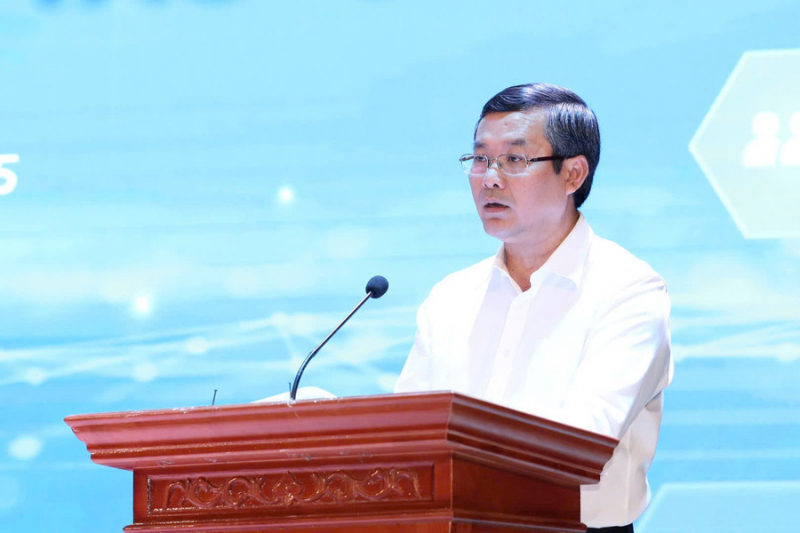
Important resolutions and conclusions of the Politburo that theEducation sector focuses on implementing include:
Resolution 57-NQ/TW affirms that science, technology, innovation and digital transformation are strategic breakthroughs and key drivers of national growth and competitiveness (Resolution 57)
Conclusion 91-KL/TW emphasizes continuing to fundamentally and comprehensively innovate education and training according to the requirements of Resolution 29-NQ/TW of the Central Executive Committee.
Resolution 66-NQ/TW emphasizes institutional and legal innovation to facilitate, remove barriers, promote scientific research, innovation, and human resource development.
Resolution 68-NQ/TW considers the private economy an important driving force, requiring the improvement of the capacity of the labor force to support this sector to break through and develop rapidly.
Resolution 59-NQ/TW identified international integration as a strategic driving force, associated with the development of an autonomous economy, enhancing national capacity and especially building high-quality human resources to participate in the global value chain.
“The Ministry of Education and Training organizes the implementation of the above resolutions. Today's conference is a step to concretize the implementation, building into programs and projects for implementation,” Deputy Minister Nguyen Van Phuc emphasized.
According to the Deputy Minister, cooperation between the State - School - Enterprise, also known as the "3 houses" model, plays a very important role in promoting the combined strength; at the same time, mobilizing and effectively exploiting resources, closely linking training, scientific research with the labor market and the economy, best meeting the needs of high-quality human resources, developing science and technology and enhancing national competitiveness.
The State plays a role in creating and planning institutions and policies, creating a favorable legal environment to encourage linkages and knowledge transfer, and investing the State budget.
Schools are not only places for training, but also centers for knowledge creation, scientific research and technology transfer and need to be encouraged, more closely linked with businesses, and invested more to meet practical and market needs.
Enterprises are not only places that employ workers trained by schools, but also places that apply, deploy, and commercialize research results, and are the most important partners of schools.
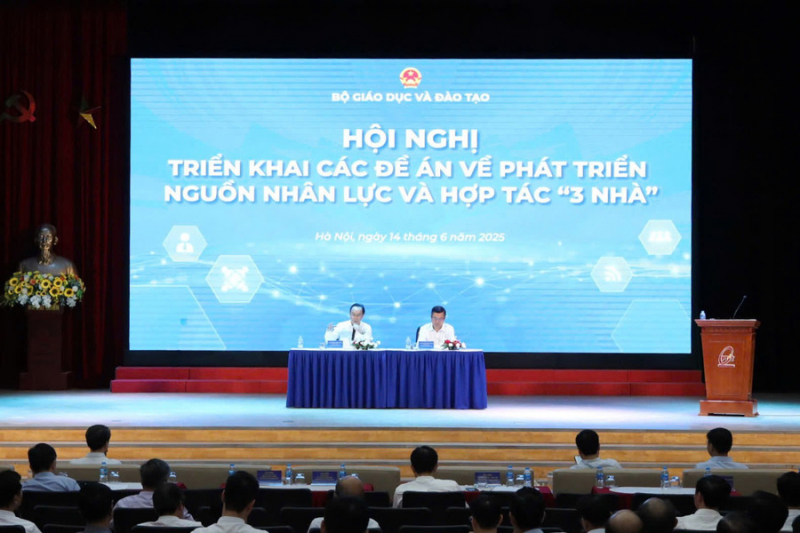
The Deputy Minister suggested that universities need to be more proactive in establishing open creative spaces, promoting a culture of start-ups and innovation. The Ministry will continue to improve mechanisms and policies to promote these activities.
Referring to the key task that the entire education sector has seriously and resolutely implemented under the direction of the Central Committee and General Secretary To Lam, which is the "Popular Digital Education" Movement, Deputy Minister Nguyen Van Phuc expressed that this is an important movement to popularize essential digital skills for people, from students, workers to businesses.
It is important to recognize that in modern society, digital knowledge and skills are as important as reading and writing. Accordingly, higher education institutions play a central and leading role, not only in compiling documents and developing online learning materials, but also in connecting with businesses and promoting the role of student volunteers in spreading digital knowledge to the community.
At the conference, referring to the Project on developing a system of excellent training centers and talents in technology 4.0 by 2030, Deputy Minister of Education and Training Hoang Minh Son said that it would be impossible to develop science and technology and innovate in a breakthrough way without high-quality and talented human resources.
“We are talking about different technologies such as semiconductors, high-speed railways, nuclear power, which not only require specialized human resources in these fields but also require a lot of STEM human resources. Even when we need to develop a certain industrial sector, the training and conversion of STEM graduates to specialize in those fields will also be very fast. It can be said that the training of high-tech human resources covers many fields,” Deputy Minister Son said, adding that there will be 100 talent training programs up to the engineer and master's levels and 100 biomedical training programs, in which there are many fields, in which priority is given to digital technology, artificial intelligence, and biotechnology.
The Ministry of Education and Training also has specific tasks to orient students to study STEM, which also requires the participation of universities themselves.
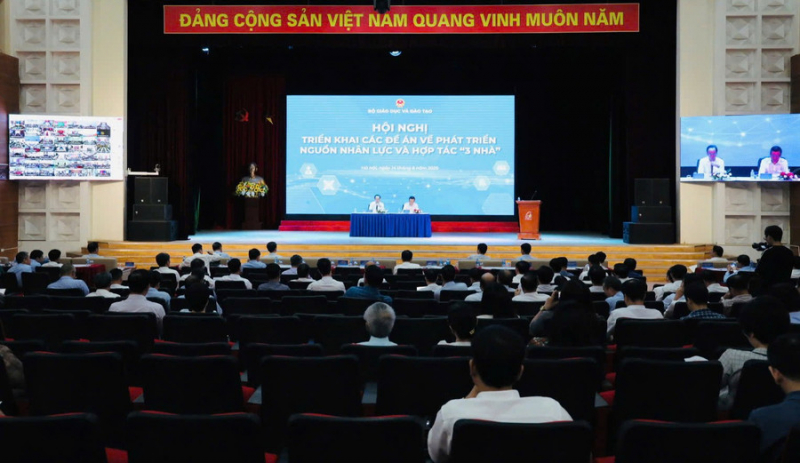
Also at the conference, with the theme of “3 houses” cooperation – opportunities and development, Associate Professor Dr. Pham Bao Son, Vice President of Vietnam National University, Hanoi (VNU), said that to adapt to the development reality, VNU has implemented the “3 houses+” model, emphasizing the expansion of cooperation with local authorities and the business community. Accordingly, the State needs to perfect the legal framework, create a favorable environment for research, technology transfer, infrastructure investment, and have an effective coordination mechanism.
In recent years, VNU has established a wide cooperation network with localities and large enterprises such as Hanoi, Quang Ninh, Nghe An, Ninh Binh, Vietcombank, SHB, Vingroup, Petrolimex, etc., to implement training, research and technology transfer projects. In the first 6 months of 2025 alone, VNU has implemented 50 R&D projects with domestic and foreign corporations such as Viettel, LG, Samsung, Pegatron, Hyundai, T&T, MB, SHB, etc. The areas of cooperation range from semiconductor chips, AI, new materials, stem cells, quantum security to pharmaceuticals and high-tech agriculture.
From 2022-2024, VNU has implemented 91 cooperation projects with a total investment value outside the state budget of over 252 billion VND. Revenue from consulting, service and technology transfer contracts reached over 130 billion VND with over 300 scientific and technological products proposed for transfer and commercialization.
Associate Professor Dr. Vu Dinh Tien, Hanoi University of Science and Technology, said that it is necessary to remove bottlenecks in the "3-house" cooperation, especially problems related to intellectual property policy, finance and research ordering mechanism.
Hanoi University of Science and Technology proposes to shift from the “reciprocal” model to the “ordering” model, in which enterprises play the role of the subject that sets requirements and sponsors research. In addition, it is necessary to move towards forming joint laboratories and R&D centers according to the public-private partnership (PPP) model to solve long-term problems, creating a sustainable flow of knowledge between schools and enterprises...
Source: https://cand.com.vn/giao-duc/giai-phap-nao-de-hop-tac-giua-nha-nuoc-nha-truong-doanh-nghiep-dat-hieu-qua--i771584/


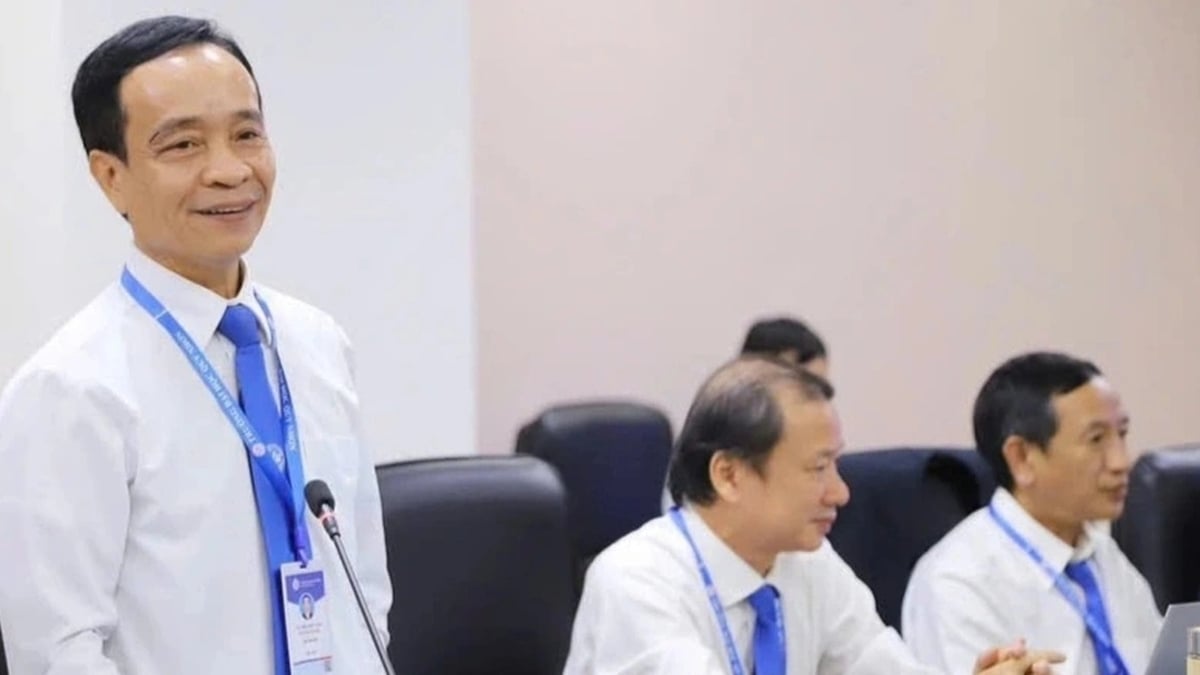








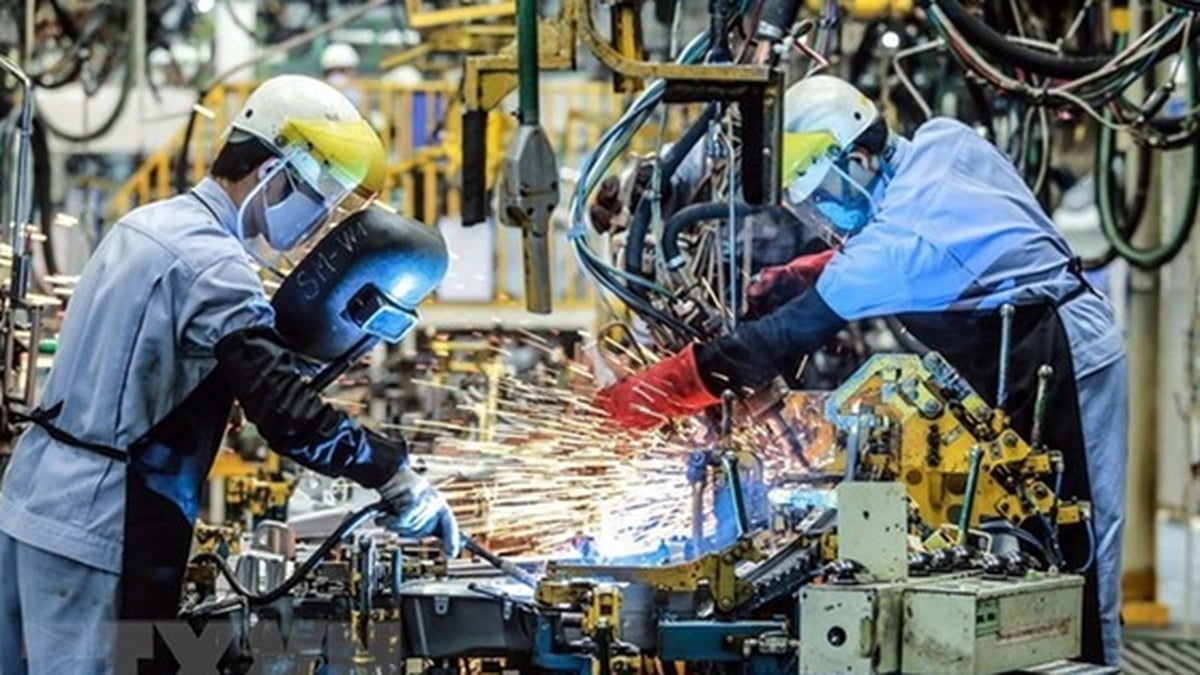








































![[Maritime News] More than 80% of global container shipping capacity is in the hands of MSC and major shipping alliances](https://vphoto.vietnam.vn/thumb/402x226/vietnam/resource/IMAGE/2025/7/16/6b4d586c984b4cbf8c5680352b9eaeb0)













































Comment (0)